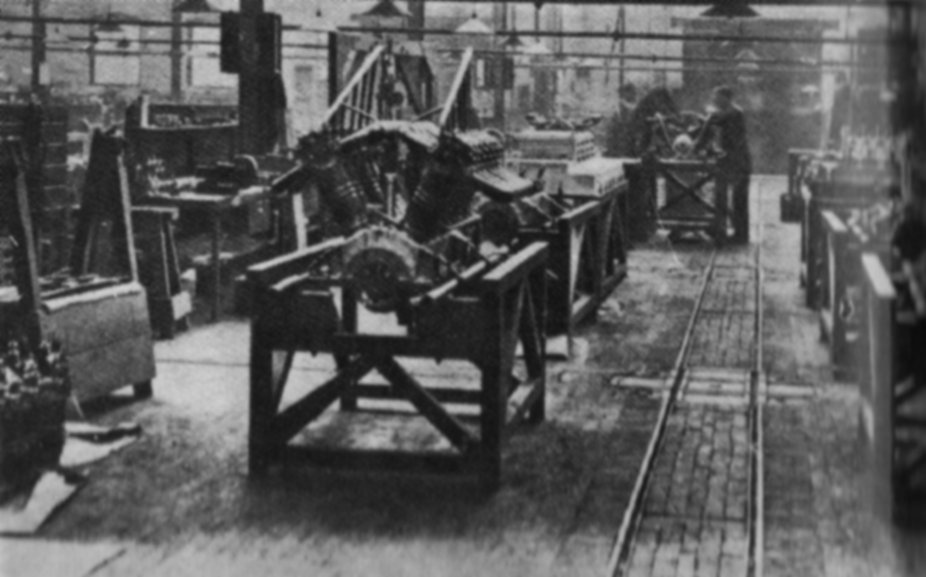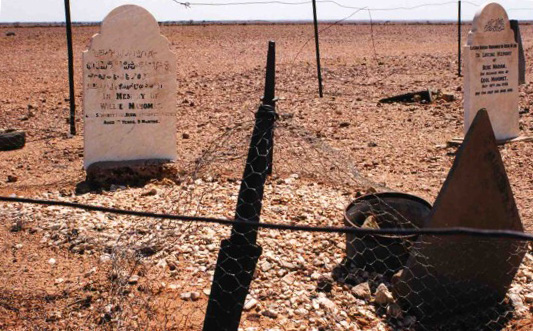|
ANEC III
The ANEC III was a 1920s British six-seat passenger and mail carrier aircraft built by Air Navigation and Engineering Company Limited at Addlestone, Surrey. History Following a requirement for a passenger and mail carrier for the Australian company Larkin Aircraft Supply Company Limited an order was placed for a monoplane airliner designed by George H. Handasyde known as the Handasyde H.2. Handasyde, having no factory of their own, contracted Air Navigation and Engineering to build the aircraft on their behalf. Larkin had decided that the H.2 monoplane could not operate in the heat of Australia, and transferred the contract to supply a new airliner to A.N.E.C. Three ANEC III aircraft were built. The new design was an unequal-span biplane with a Rolls-Royce Eagle IX engine. The pilot sat in the open above the mail compartment, with space for six passengers or cargo inside the fuselage. The first aircraft flew at Brooklands on 23 March 1926 with the Australian registration G ... [...More Info...] [...Related Items...] OR: [Wikipedia] [Google] [Baidu] |
Air Navigation And Engineering Company
Air Navigation and Engineering Company Limited was a British aircraft manufacturer from its formation in 1919 to 1927. History The company was formed in 1919 when the Blériot & SPAD Manufacturing Company Limited was renamed. The company was based at Addlestone Surrey. The Blériot aircraft company had opened a factory at Addlestone during World War I to make SPAD and Avro aircraft and in 1919 the company became the Air Navigation and Engineering Company Limited. One of the first products was a cyclecar designed by Herbert Jones and W.D. Marchant called the Blériot-Whippet. In 1922 the company built a 10-seat biplane airliner (the Handasyde H.2) on behalf of the Handasyde Aircraft Company Limited. The company built a number of light aircraft, the first designed by W.S. Shackelton was the ANEC I flying in 1923. The aircraft were built at Addlestone then roaded to Brooklands for flight testing. The company stopped producing aircraft in 1926 and closed in 1927. Aircraft desi ... [...More Info...] [...Related Items...] OR: [Wikipedia] [Google] [Baidu] |
Marree, South Australia
Marree (formerly Hergott Springs) is a small town located in the north of South Australia. It lies North of Adelaide at the junction of the Oodnadatta Track and the Birdsville Track, above sea level. Marree is an important service centre for the large sheep and cattle stations in northeast South Australia as well as a stopover destination for tourists traveling along the Birdsville or Oodnadatta Tracks. The area is the home of the Dieri Aboriginal people. At the 2011 census, the Marree census district which includes the entire northeastern corner of South Australia had a population of 634, with 70% of the population being male. The town of Marree has a population of approximately 150 persons. The major areas of employment are mining, agriculture and accommodation services. The town was home to Australia's first mosque, which was made of mud brick and built by the Afghan cameleers employed at Marree's inception. At the turn of the 20th century the town was divided in two, w ... [...More Info...] [...Related Items...] OR: [Wikipedia] [Google] [Baidu] |
ANEC Aircraft
ANEC may refer to: * A&N Electric Cooperative - Utility cooperative serving the Eastern Shore of Virginia and Smith Island, Maryland * Air Navigation and Engineering Company Air Navigation and Engineering Company Limited was a British aircraft manufacturer from its formation in 1919 to 1927. History The company was formed in 1919 when the Blériot & SPAD Manufacturing Company Limited was renamed. The company was ... - British aircraft manufacturer in 1919 * The European consumer voice in standardisation - representing the collective European consumer interest in (technical) standards {{disambiguation ... [...More Info...] [...Related Items...] OR: [Wikipedia] [Google] [Baidu] |
1920s British Airliners
Nineteen or 19 may refer to: * 19 (number), the natural number following 18 and preceding 20 * one of the years 19 BC, AD 19, 1919, 2019 Films * ''19'' (film), a 2001 Japanese film * ''Nineteen'' (film), a 1987 science fiction film Music * 19 (band), a Japanese pop music duo Albums * ''19'' (Adele album), 2008 * ''19'', a 2003 album by Alsou * ''19'', a 2006 album by Evan Yo * ''19'', a 2018 album by MHD * ''19'', one half of the double album '' 63/19'' by Kool A.D. * '' Number Nineteen'', a 1971 album by American jazz pianist Mal Waldron * ''XIX'' (EP), a 2019 EP by 1the9 Songs * "19" (song), a 1985 song by British musician Paul Hardcastle. * "Nineteen", a song by Bad4Good from the 1992 album ''Refugee'' * "Nineteen", a song by Karma to Burn from the 2001 album ''Almost Heathen''. * "Nineteen" (song), a 2007 song by American singer Billy Ray Cyrus. * "Nineteen", a song by Tegan and Sara from the 2007 album '' The Con''. * "XIX" (song), a 2014 song by Slipkno ... [...More Info...] [...Related Items...] OR: [Wikipedia] [Google] [Baidu] |
V12 Engine
A V12 engine is a twelve- cylinder piston engine where two banks of six cylinders are arranged in a V configuration around a common crankshaft. V12 engines are more common than V10 engines. However, they are less common than V8 engines. The first V12 engine was built in 1904 for use in racing boats. Due to the balanced nature of the engine and the smooth delivery of power, V12 engines were found in early luxury automobiles, boats, aircraft, and tanks. Aircraft V12 engines reached their apogee during World War II, following which they were mostly replaced by jet engines. In Formula One racing, V12 engines were common during the late 1960s and early 1990s. Applications of V12 engines in the 21st century have been as marine engines, in railway locomotives, as large stationary power as well as in some European sports and luxury cars. Design Balance and smoothness Each bank of a V12 engine essentially functions as a straight-six engine, which by itself has perfect primary ... [...More Info...] [...Related Items...] OR: [Wikipedia] [Google] [Baidu] |
Rolls-Royce Eagle IX
The Rolls-Royce Eagle was the first aircraft engine to be developed by Rolls-Royce Limited. Introduced in 1915 to meet British military requirements during World War I, it was used to power the Handley Page Type O bombers and a number of other military aircraft. The Eagle was the first engine to make a non-stop trans-Atlantic crossing by aeroplane when two Eagles powered the converted Vickers Vimy bomber on the transatlantic flight of Alcock and Brown in June 1919. Background At the outbreak of World War I in August 1914, the Royal Aircraft Factory asked Rolls-Royce to develop a new air-cooled engine. Despite initial reluctance they agreed on condition that it be cooled by water rather than air, as this was the company's area of expertise. Design and development Development of the new 20 litre engine was led by Henry Royce from his home in Kent. Based initially on the 7.4 litre 40/50 Rolls-Royce Silver Ghost engine, and drawing also on the design of a 7.2 litre Daimle ... [...More Info...] [...Related Items...] OR: [Wikipedia] [Google] [Baidu] |
ANEC III 3-view Les Ailes April 29, 1926
ANEC may refer to: * A&N Electric Cooperative - Utility cooperative serving the Eastern Shore of Virginia and Smith Island, Maryland * Air Navigation and Engineering Company Air Navigation and Engineering Company Limited was a British aircraft manufacturer from its formation in 1919 to 1927. History The company was formed in 1919 when the Blériot & SPAD Manufacturing Company Limited was renamed. The company was ... - British aircraft manufacturer in 1919 * The European consumer voice in standardisation - representing the collective European consumer interest in (technical) standards {{disambiguation ... [...More Info...] [...Related Items...] OR: [Wikipedia] [Google] [Baidu] |
Donald George Mackay
Donald George Mackay CBE (29 June 187017 September 1958) was an Australian outdoorsman, long-distance cyclist, and explorer who conducted several expeditions to the remotest areas of the Australian continent. Early life Donald George Mackay was born on 29 June 1870 at Yass, New South Wales, son of Alexander Mackay, owner of Wallendbeen station, and his wife Annie. Mackay was educated at Wallendbeen Public School and at Oaklands School, Mittagong. After a brief engineering apprenticeship he worked for his father until the latter's death in 1890. During 1890-99 Mackay travelled extensively abroad, and later prospected for gold in western New South Wales. Cycling expedition around Australia In July 1899 Mackay belatedly joined brothers Alex and Frank White to become the first men to travel around the continent of Australia on a bicycle. Mackay's 24-in. frame, 29 lb. ''DUX'' bicycle was especially strengthened to carry Mackay's weight plus his gear, which included two water cans ... [...More Info...] [...Related Items...] OR: [Wikipedia] [Google] [Baidu] |
Armstrong Siddeley Jaguar
The Armstrong Siddeley Jaguar was an aircraft engine developed by Armstrong Siddeley. The Jaguar was a petrol-fuelled air-cooled 14-cylinder two-row radial engine design. The Jaguar III was first used in 1923, followed in 1925 by the Jaguar IV and in 1927 by the Jaguar VI. In 1925 the Jaguar became the first production aero engine incorporating a geared supercharger. Design and development The Jaguar was developed from the Royal Aircraft Factory RAF.8 design proposal of 1917, and was engineered to use a gear-driven supercharger. First run on 21 June 1922 initial performance was not as expected; as a result the stroke was increased to 5.5 in (139.7 mm) on all variants after the Jaguar I. Throughout its career the Jaguar suffered from vibration due to a lack of a crankshaft centre bearing. The most powerful version of the engine, the Jaguar VIC, produced a maximum of 490 hp (365 kW) on takeoff at 1,950 rpm and weighed 910 lb (413 kg). The later Ly ... [...More Info...] [...Related Items...] OR: [Wikipedia] [Google] [Baidu] |
Charlotte Waters
Charlotte Waters was a tiny settlement in the Northern Territory of Australia located close to the South Australian border, not far from Aputula. It was known for its telegraph station, the Charlotte Waters Telegraph Station, which became a hub for scientists travelling in central Australia in the late 19th and early 20th century. Aboriginal artist Erlikilyika, known to Europeans as Jim Kite, lived there. Only a ruin remains today. History Traditional names Norman Tindale, in his Cockatoo Creek expedition (1931) journal, recorded ''Alkngulura'' as the name of Charlotte Waters, and translated this as "Alknga – eye – ulura – ?hill", and Strehlow was told by Tom Bagot Injola in 1968 that the waterholes close to the telegraph station were known as ''Alkiljauwurera'', ''Alkngolulura'' and ''Untupera''. Jason Gibson, of Museum Victoria, noted that two other Lower Arrernte place names have been recorded for the area: ''Adnyultultera'' and ''Arleywernpe''. Settlement Cha ... [...More Info...] [...Related Items...] OR: [Wikipedia] [Google] [Baidu] |
Farina, South Australia
Farina, formerly ''Farina Town'', is a town and locality in the Australian state of South Australia. At the 2006 census, Farina had a population of 55. On the edge of the desert, it sits within the Lake Eyre Basin and it is situated on the old alignment of the Ghan railway, north of Lyndhurst and south of Marree where the Oodnadatta Track and the Birdsville Track commence. History Originally called The Gums or Government Gums, Farina was settled in 1878 by optimistic farmers hoping that '' rain follows the plough''. The town was the railhead for a time until 1884 before the railway was extended to Marree. During the wet years of the 1880s, plans were laid out for a town with 432 ¼-acre blocks. It was believed that it would be good for growing wheat and barley, however normal rainfall is nowhere near enough to grow these crops. Several silver and copper mines were dug in the surrounding area. Farina grew to reach a peak population of approximately 600 in the late 18 ... [...More Info...] [...Related Items...] OR: [Wikipedia] [Google] [Baidu] |






